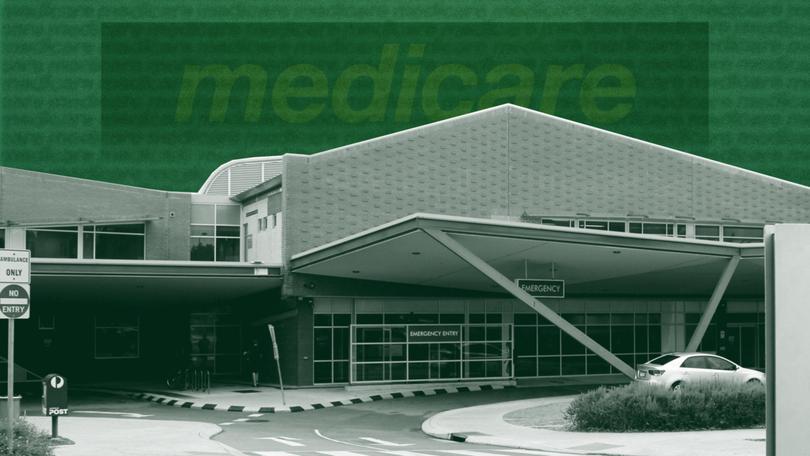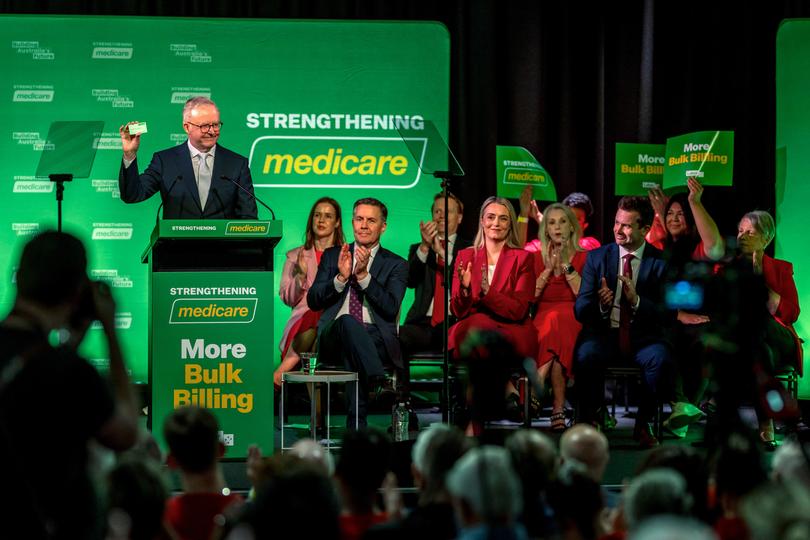Doctors warn more Medicare reform needed to answer sector’s struggles despite landmark election promise

Australia’s medical community has welcomed the Government’s centrepiece election pledge to ensure nine in 10 visits to the doctor will be free by 2030 but warned it cannot be the only answer to resolving the healthcare sector’s struggles.
Prime Minister Anthony Albanese unveiled the landmark $8.5 billion boost to Medicare – briefed as “legacy defining” – at a rally in Tasmania on Sunday. The policy aims to stop the decline of bulk-billing.
It was immediately matched by a Coalition promise of a $9b investment in Medicare, including a previously announced $500m fund to address mental health concerns.
Sign up to The Nightly's newsletters.
Get the first look at the digital newspaper, curated daily stories and breaking headlines delivered to your inbox.
By continuing you agree to our Terms and Privacy Policy.The two major parties have been vague on the details of how they will fund their ambitious healthcare promises as they gear up for an election fight over one of the country’s top three cost-of-living concerns.
Opposition leader Peter Dutton on Monday said medics were right to be sceptical of the Government’s financial targets, while Mr Albanese slammed the Coalition’s Medicare counteroffer and said they could not be trusted.
The medical community, meanwhile, has given a cautious welcome to the move, while calling for more fundamental reform and to keep healthcare out of electoral brawls.
“It’s not that we don’t believe that this (pledge) will help, but it’s actually not the only solution, because this alone is not going to solve the problem, Susi Tegen, chief executive of the National Rural Health Alliance told The Nightly.
The Medicare bulk-billing policy would not paper over the stark gulf between better-resourced urban medical clinics and rural and remote GP or primary care practices with high service costs that could not afford to bulk bill and would still struggle to make ends meet, she said.
The operational costs and longer and more complex consults due to the comorbidity of rural Australians meant that many rural health services were making a loss while trying meet their community’s needs, she said.
The policy, which represents the largest funding injection into Medicare for 40 years, would provide practices with an extra payment worth 12.5 per cent of their Medicare billing if they bulk-billed every patient.
The Government says its plan would make it more financially beneficial for 4800 GP practices – about 60 per cent of the total – to bulk-bill every patient instead of charging gap fees to some.
But Ms Tegen said many rural clinics would not be among them. While remote communities are still crunching the numbers, for some the new bulk-billing would likely mean a $650,000 annual loss instead of $800,000.
“Those clinics that can’t afford to bulk-bill because they work in a region where the markets failed them, they’re going to make less loss, but they’re still making a loss, which tells me that Medicare is not the only answer, and they will require block funding,” she said.
The success of the incentive in rural communities depended on pushing a multipronged approach that would include sustaining an affordable workforce on the ground and dealing with long-term shortages like antenatal care, she argued.

Rural communities, which make up 30 per cent of the population and bring in about two thirds of Australia’s export income and provide about 90 per cent of the country’s food, were being neglected.
“We know that there is an underfunding of rural communities, and they’re having to fight for it and beg,” said Ms Tegel.
“We’ve said to the Government, we need a billion-dollar health fund for rural health over four years. Half of that will be spent in those regions where the market fails, and they will receive block funding to top it up so they’re not making these massive losses,” she said.
“It’s economics 101 — when the market fails, you need the government to step in.”
Dr Danielle McMullen, president of the Australian Medical Association, agreed that while the Government had flagged a “landmark investment” that would sustain viability for practices already bulk-billing, the incentives would not benefit everyone.
“In many other private practices, where we’re seeing the average out of pocket cost above $40, even the $21 incentive doesn’t help close that gap,” she said, adding that longer consultations and chronic disease management were still to be adequately addressed.
The AMA’s own financial analysis has found that the freezing of indexation by successive governments stripped close to $4b from general practice, and the long-running neglect of Medicare means the patient rebate no longer bears any relationship to the actual cost of high- quality service.
Greater support was needed for patients with more complex needs, said Dr McMullen.
“Medicare was invented at a time when people had one or two simple issues to go see the GP with and medical treatment was much simpler. We now have more chronic disease, more mental health problems and ageing population,” she said.
“We’ve seen the average consultation length move from roughly 10 minutes when Medicare started to up to just over 18 minutes. And so there’s been this huge skew into extra time for the same rebate.”
However, health policy expert Stephen Duckett said he expected the move to expand the bulk-billing incentives to all patients combined with the practice-wide payments would significantly improve the rates of bulk-billing in metropolitan areas.
He thought the incentive payment changes combined with State government moves on payroll tax would prove enough to reach the 90 per cent average bulk-billing rate in Labor’s sights – and possibly well before 2030.
“I think there’s so many things that we’ll see the change pretty quickly – that means over a 12- or 18-month period, not a five-year period,” he said.
He said practices would look at their budgets and move to fully bulk-bill based on three factors: ideology, their current bulk-billing levels, and the size of the gap payments charged now.
“The higher their current bulk-billing rate, and the lower their current out-of-pocket, the more this is going to make them bulk bill,” he said.
“If you’re currently at 90 per cent bulk billing, you’re almost certainly going to move to 100 per cent – you’re almost there, and you’re going to get a 12.5 per cent bonus… (but) if you’re at 40 per cent you’re unlikely to go to 100 per cent.”
Professor Duckett said using the incentive payments rather than increasing the rebate meant GP practices couldn’t pocket the extra government funding without reducing fees to patients.
“Restoring or increasing the rebate will not achieve the policy objective that the government wants to achieve. That is, it may not lead to an increase in bulk billing … which is the policy objective,” he said.
